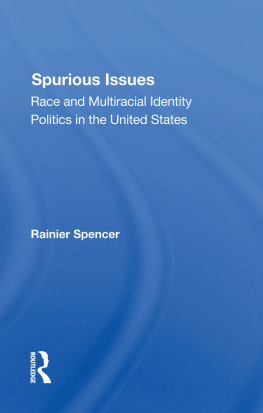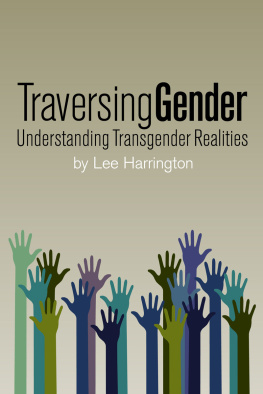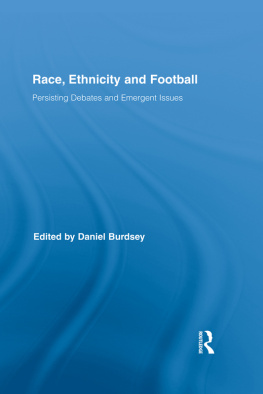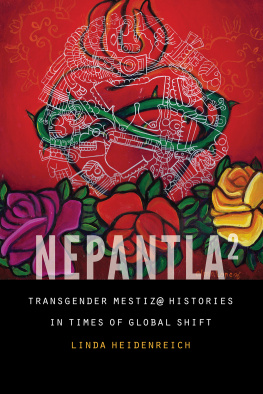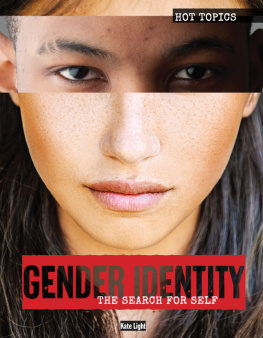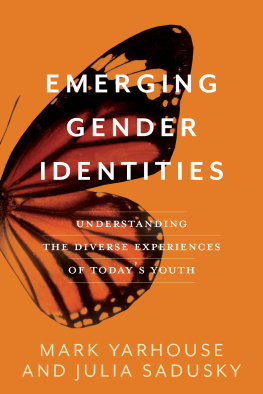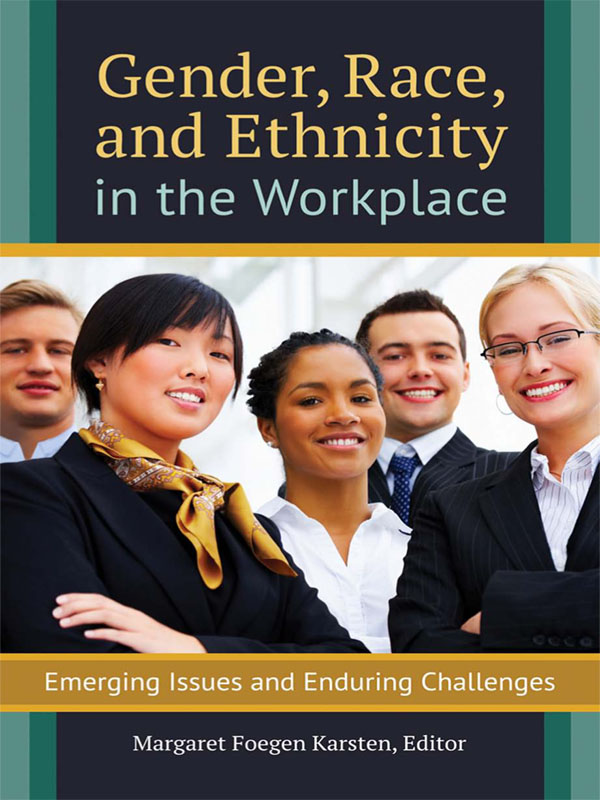Gender, Race, and Ethnicity in the Workplace
Copyright 2016 by Margaret Foegen Karsten
All rights reserved. No part of this publication may be reproduced, stored in a retrieval system, or transmitted, in any form or by any means, electronic, mechanical, photocopying, recording, or otherwise, except for the inclusion of brief quotations in a review, without prior permission in writing from the publisher.
Library of Congress Cataloging-in-Publication Data
Names: Karsten, Margaret Foegen, editor.
Title: Gender, race, and ethnicity in the workplace : emerging issues and enduring challenges / Margaret Foegen Karsten, editor.
Description: Santa Barbara, California : Praeger, [2016] | Includes index.
Identifiers: LCCN 2015038978| ISBN 9781440833694 (print : alk. paper) | ISBN 9781440833700 (e-book)
Subjects: LCSH: Diversity in the workplaceUnited States. | Discrimination in the workplaceUnited States.
Classification: LCC HF5549.5.M5 G46 2016 | DDC 658.3008dc23 LC record available at http://lccn.loc.gov/2015038978
ISBN: 978-1-4408-3369-4
EISBN: 978-1-4408-3370-0
201918171612345
This book is also available on the World Wide Web as an eBook.
Visit www.abc-clio.com for details.
Praeger
An Imprint of ABC-CLIO, LLC
ABC-CLIO, LLC
130 Cremona Drive, P.O. Box 1911
Santa Barbara, California 93116-1911
This book is printed on acid-free paper 
Manufactured in the United States of America
Ideas and opinions expressed in chapters of Gender, Race, and Ethnicity in the Workplace are those of the authors and do not necessarily reflect views of the editor or publisher.
To the contributors who made this volume possible, with gratitude
Contents
Margaret Foegen Karsten
Tanya Kater Hernndez
Bahaudin G. Mujtaba and Frank J. Cavico
Vanessa Sheridan
Jongsung Kim and Shani D. Carter
Donna Castaeda
Thomas S. Collins
Marilyn Y. Byrd
Amanda Kraus and Martha Farnsworth Riche
Gary N. Powell and D. Anthony Butterfield
Karen L. Proudford, Jessica L. Porter, Golshan Javadian, and Nancie Zane
Kimberly E. OBrien
Janelle M. Silva and Samuel Link
Julie Manning Magid
Darlene M. Clabault
Se Hoon Kim
Lora Reed
Damary M. Bonilla-Rodriguez
Sarah R. Kostelecky
Ann-Lorraine Edwards
Marvee L. Marr
Margaret Foegen Karsten
As never before, given current demographic trends, developing and retaining top talent to assure economic competitiveness and survival depend on stakeholders in-depth understanding of issues affecting women and people of color. The latter are projected to become a statistical majority in the United States by 2044. Stories of new twists and turns on their paths to employment equality must continue to be told to make sure that workplace equity is not a mirage.
Though specific issues differ, gender, race, and ethnicity, along with other categorizations, have affected employment opportunity. Due to stereotypes, socialization, and overt or subtle exclusion, all three have been and continue to be used to restrict career advancement. Among the first classes to be legally protected from employment discrimination, race, ethnicity, and gender deserve in-depth treatment.
Consequential societal, economic, and legal changes affecting employed women and people of color have occurred in the past 10 years. Many will be explained in the following chapters; relatively few can be recounted here.
In terms of race and ethnicity, a warning following short-term social disintegration after Hurricane Katrina in 2015 rings eerily true. The concern was that growing gaps between haves and have-nots in the United States... could result in chaos affecting all institutions, including businesses.
Rioting and looting in the aftermath of the killing of Michael Brown, an unarmed 18-year-old black man by a white police officer in Ferguson, Missouri, on August 9, 2014, had many devastating consequences including the effects on business owners in that area. Ten months later, their clean-up efforts still had a long way to go, and some chose not to reopen their stores.
If incidents just described were insufficient to expose the notion that U.S. society has been done with race for a very long time, that we overcame... reached the Promised Land, and built luxury condos there as a lie born of wishful thinking, the horrific murders of nine African Americanseight congregants and the pastorat the African Methodist Episcopal Church in Charleston, South Carolina, in June 2015, removed all doubt. That those killings shocked the nation and world is indisputable.
Colleges and universities were not immune to the killings in Ferguson and Charleston or to police shootings. Racial tensions flared on campuses nationwide in 2015 leading to, among other things, the November resignations of the chancellor of the University of Missouri at Columbia and the president of the University of Missouri system. Students of color and their allies were angered by the lack of response to specific racial incidents on campus as well as administrators subdued reaction to events in nearby Ferguson in summer 2014. As top administrators stepped down, the university pledged to hire a chief diversity/inclusion/equity officer at the system level as one of several measures to promote healing.
In response to a July 2015 survey, the Pew Research Center reported that half of all Americans now see race relations as a big problem; only 4% consider it no problem at all.the election of the first biracial U.S. president who identified as an African American and caused some to prematurely tout the end of racism and, by extension, of employment discrimination.
Overall race relations in the United States often are reflected in the workplace, though some progressive organizations lead the way for the rest of the society. The blackwhite dichotomy has not adequately described the workforce composition for many years. People of various ethnicities, such as Hispanics or Latinos and Asian Americans, among the fastest growing groups in the U.S. workforce, American Indians, and those identifying as multiracial are also part of the labor force. They must be considered and their stories heard.
Much progress has been made toward workplace equity, as contributors to many chapters in this volume point out. They seem united in the conclusion, however, that much more must be done. The best minds are needed to work smarter and harder to banish institutional, organizational, and explicit and implicit racism and sexism.
Shifting from a consideration of race and ethnicity to gender, a tripling of the number of women heading Fortune 500 firms still left women of color leading less than 1% of those powerful companies; white women now lead close to 5%. Women remain underrepresented in manufacturing, are described in other volumes that also recommend attraction and retention strategies.
Not to be outdone by the private civilian sector in promoting job equality, the U.S. military revoked a long-standing ban on women in combat positions and dont ask, dont tell policies applying to gay and lesbian service members and is expected to allow transgender individuals to serve in 2016.
The military, however, was once again plagued by highly publicized sexual harassment and assault cases in the past decade, this time in the Air Force. Far from having ended, egregious harassment remains a pervasive problem for private firms and society. As examples, names of political figures became synonymous with the issue, and a Penn State fraternity was suspended for posting nude photos of women on a Facebook page without their knowledge.



